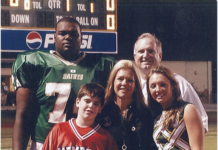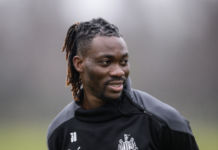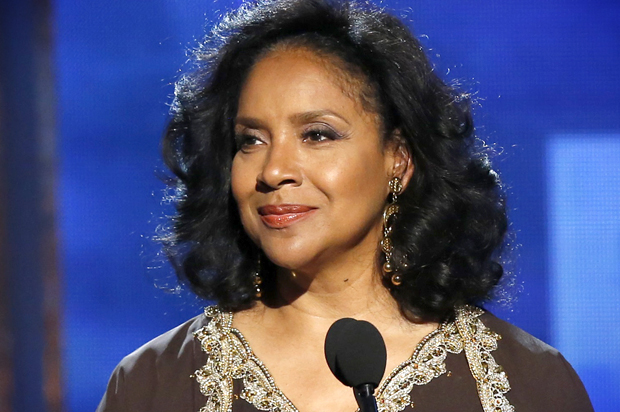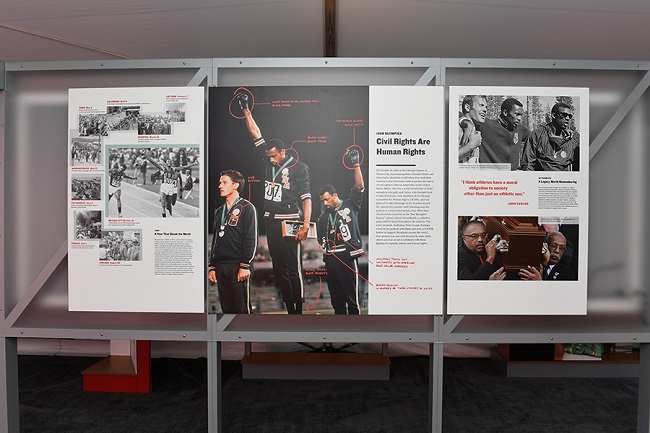

Set up on the third floor of Atlanta’s Philips Arena Experience is a rectangular time capsule commemorating how athletes spanning seven decades have acted as global social change agents and crusaders. The 800-square-foot multimedia exhibit, “Breaking Barriers: Sports for Change,” is an interactive cultural studies and history lesson depicting how competition, perseverance and teamwork collectively ignited efforts to ensure civil and human rights are granted to all people.
Unveiled in conjunction with the opening of Atlanta Hawks’ 2016-17 season, “Breaking Barriers” quilts together biographical sketches, direct quotes, sound bites, banners, archival footage, photo galleries, data tables and life-size silhouettes of various iconic sports figures. The shrine pays homage to the competitors’ selfless advocacy dedicated towards causes like HIV/AIDS, prejudice, discrimination, education, immigration, poverty, unequal pay, sexism and gender inequality.
“Sports is the right platform to unite and get the message out,” says Nzinga Shaw, the Hawks’ chief diversity and inclusion officer. “Sports is more than a game. It’s stories about human beings with agendas that they care about that impact communities long term.”
One tower features late boxer Muhammad Ali conducting a radio interview expressing his antiwar stance and decision to not enlist in the armed services because of racism. Towers acknowledge pioneering baseball player Jackie Robinson and tennis player Arthur Ashe for breaking the color barrier.
A larger central fixture chronicles the race riots that permeate America in 1968. Olympic sprinters Tommie Smith and John Carlos are on a conjoining poster filled with red marks explaining how their uniforms endorse black pride. Adjacent to the 1968 tribute is another Olympic arrangement: sprinter Jesse Owens racing to gold in 1936 in Berlin plays on a monitor. Headshots of Owens’ black teammates on the U.S. Olympic team are tiled next to the monitor.
“It’s the biographical power of what these athletes did that gives it storytelling emotion and power,” says David Mandel, the National Center for Civil and Human Rights’ director of exhibits and design.
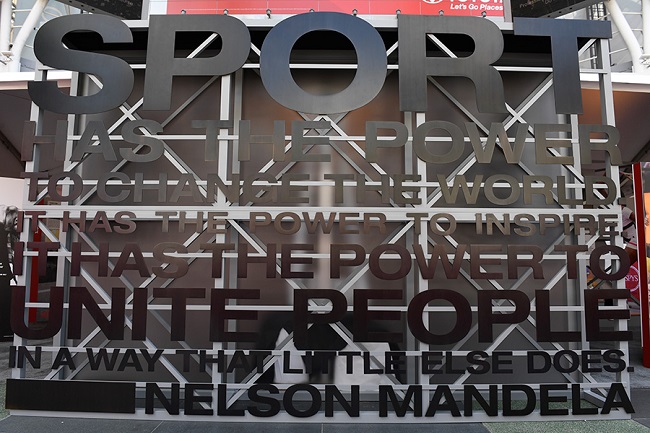
A metal ring-filled back wall captures a range of athletes (Wade Davis, Jason Collins, Martina Navratilova, Greg Louganis, Glenn Burke, John Amaechi, Orlando Cruz and Sheryl Swoopes) who either came out or fought for LGBTQ issues. A few feet away sits larger cutouts of tennis players Billie Jean King and Venus Williams in mid-swing. Amputee runner Terry Fox, along with a neighboring mini-documentary on the Special Olympics, chronicles the plight of competitors with disabilities.
Shaw, who organized the Hawks’ diversity council and made history as the first ever diversity and inclusion executive for the NBA as well as on any professional sports franchise, is quite inspired by the influx of LGBTQ athletes responsible for spearheading social change. She speaks in detail about the Hawks marching in the 46th annual Atlanta Pride parade this year.
Inspired by the work of the athletes, the Hawks donated over 1,000 hours of community service during its Unity weekend: partnering with six community organizations following recent protests this past summer outside of Philips Arena. The Hawks’ preseason game against the Cleveland Cavaliers kicked off with the players from both teams holding hands, unified by their positions.
“It doesn’t feel good to come to work and know that people are upset,” says Shaw. “We couldn’t just talk about it. We had to be about it.”
Shaw continues, “[Athletes] have used their voice, and they’ve used their platform of being athletes because they know people will see them. It’s exemplification that sports can connect communities. Through conversation, we are able to provoke something that turns to actionable steps.”
“Breaking Barriers” is conceptualized by ESPN’s vice president of corporate citizenship Kevin Martinez. Martinez visited the Center’s grand opening in June 2014 and wanted to construct a reminder of how sports has contributed to various social movements. Plans to erect and create “Breaking Barriers” went into effect this past January, finally making its debut underneath an outdoor tent at the ESPYs in Los Angeles last July.
Mandel, a self-proclaimed “exhibit mechanic,” has spent the last quarter of a century building permanent exhibits for the Country Music Hall of Fame, National Constitution Center, the New York Historical Society and the U.S. Holocaust Memorial Museum. A fan of quotes, Mandel worked closely with Tony-winning theatre and film veteran George C. Wolfe, historian Pellom McDaniels and New York-based design firm The Rockwell Group to fully assemble “Breaking Barriers.”
The curator and design specialist knows the representations selected for “Breaking Barriers” could potentially inspire generations of athletes, activists, sports fans and productive citizens.
“The stories that we chose are the biographies of athletes who’d reached a certain pinnacle of success in their athleticism,” says Mandel, giving a detail-oriented synopsis of arranging the exhibit. “When they got to that level, they spoke out about a certain issue that mattered to them.”
“Breaking Barriers: Sports for Change” is on display from Oct. 27 to Nov. 12 at Philips Arena in Atlanta. The exhibit will relocate to the National Center for Civil and Human Rights from Nov. 12 until Nov. 30.
This post was written by Christopher A. Daniel, pop cultural critic and music editor for The Burton Wire. He is also a visiting instructor in the Department of Communication at Georgia State University. Follow Christopher @Journalistorian on Twitter.
Follow The Burton Wire on Twitter or Instagram @TheBurtonWire.



